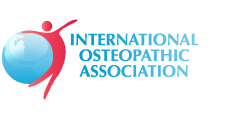• Obtain the patient’s consent.
• Acknowledge that patients have the right to change their minds about consenting to procedures.
• Avoid causing unnecessary distress or embarrassment to the patient by inappropriate touching.
• Show respect by maintaining the patient’s dignity.
• Respect, as much as possible, the patient’s personal sense of space.
• Use firm and gentle pressure when touching the patient to give reassurance and produce a relaxed response.
• Avoid hesitant movements by being deliberate and efficient.
Manual osteopaths must recognize the patient controls consent and:
• the patient is entitled to know why, where and when he/she is to be touched;
• consent may be withdrawn at any time during a procedure;
• agreement, acquired verbally or non-verbally, is required before a patient may be touched;
• special situations must be identified and possible options anticipated; and
• patient concerns must be addressed first.
• Make patients, who must necessarily be partially unclothed, as comfortable as possible.
• Give patients clear instructions about how to wear the gown.
• Allow patients independence, and enough time and privacy while disrobing.
• Touch only those areas needed to facilitate removal of clothing when providing assistance to disrobe, and preferably, if the patient is female, have a female assistant attend to the matter.
• Request the patient’s permission for staff to observe.
To avoid perceptions of sexual abuse, make touching an acceptable encounter by:
• providing reassurance and explanations throughout the procedure;
• involving patients in some aspects of procedures, such as moving themselves in response to clear instructions;
• encouraging patients to identify affected areas or landmarks when possible; and
• constantly checking for the level of understanding and consent by the patient.
Procedures requiring touching of patients are open to misinterpretation. Ensuring that patients understand at all times what is being done and why will greatly reduce the risk of offense. Considerate touching will encourage the patient to relax and cooperate in ways that will save time and produce better results.
Guidelines
on Proper
Way to
Touch

